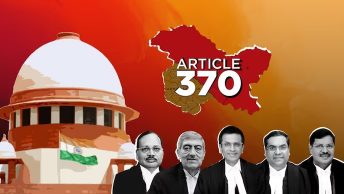Guest Post by Vivek Anandh, an advocate who practices before the Delhi High Court
The decision of the Supreme Court collegium to upload its resolutions with reasons is a watershed moment in the long time campaign by various stakeholders to ensure transparency in its functioning, albeit with certain reservations. Until now the functioning of the collegium was shrouded in utmost secrecy with news articles regarding the appointment or transfer of judges from the collegium citing ‘highly placed sources’. This method of functioning of the collegium came under heavy criticism from various sections of the society, since no significant improvement happened even after the court in the NJAC judgment accepted that the collegium system requires corrective measure for ‘improvement’ in its functioning.
After the delivery of the judgment, declaring the National Judicial Appointments Commission as unconstitutional the bench invited suggestions for improving the functioning of the collegium, in pursuance to which a report came to be filed by Arvind Datar and others, containing recommendations on four categories: Transparency, Eligibility, Secretariat, and Complaints. Of the four categories, the recommendations made under the head of transparency were easily implementable by the collegium itself without having had to wait for the finalisation of the Memorandum of Procedure. But it was not until the recent furore over the resignation of Justice Patel that this voluntary disclosure of collegium resolutions occurred.
What is yet baffling is the consistent failure of the institution to recognise the importance of civil audit of its functioning, which cannot be sustained without adequate disclosure of information about its functioning. The recent episode of Justice Karnan has amply demonstrated that such disclosure of information at the level of the High Collegium would have at least provided sufficient warning about the appointment of any ineligible candidate to the bench. The sordid saga of the Supreme Court having to resort to its contempt jurisdiction against a serving High Court judge cannot easily be erased.
Even now, the decision to disclose the resolutions cannot be termed sufficient. It is a first step in a long way that is to be covered. The resolution of the collegium to disclose information made a subtle reservation at the end in stating that “The Resolution is passed to ensure transparency and yet maintain confidentiality in the Collegium system.” No information has been provided as to whatthe maintaining of confidentiality would entail and what aspects its functioning and information which would be reserved from disclosure. The protest lodged by a member of the collegium, Justice Chelameswar, specifically asked that minutes of the meetings to discuss appointments and transfers be maintained. Subsequently, only an informal source provided news that the ‘circulation’ method has been adopted, where files on appointments and transfers are circulated amongst the members with each of them having to provide their reasons in writing about their decision. The reasons provided in the resolutions are extremely limited for any meaningful understanding to be drawn about the appointment of a candidate. For example, each of the candidates who are members of the lower judiciary have their professional ability has been assessed by “Judgment Committee” which assess the quality of judgments delivered by them. With no basic information about the criteria upon which the committee makes the assessment and the weightage that the conclusion of the judgement committee carries in the overall decision to appoint a candidate it is inadequate in the least. It is also notable that for the appointment and transfer of judges of the High Court opinion of only three senior most members of the collegium is required to arrive at the decision and all the five members for the appointment to Supreme Court.
In spite of this being a very bold and welcome move, it does not completely satisfy the requirements of transparency. Adequate disclosure of relevant information must start from the High Court collegium stage itself, when a candidate is under the zone of consideration. This would inculcate the first principles of transparency in the appointment process, while paving the way for civil participation as well. Arguably, the present mindset within the judicial set up against any move towards ensuring transparency is to protect the institutional integrity. Counterintuitively, such informational disclosure would also shield the decisions of collegium from unnecessary criticism paving way for enhanced institutional integrity that it strives for. This is welcome step, albeit in a long road that is yet to be covered.





